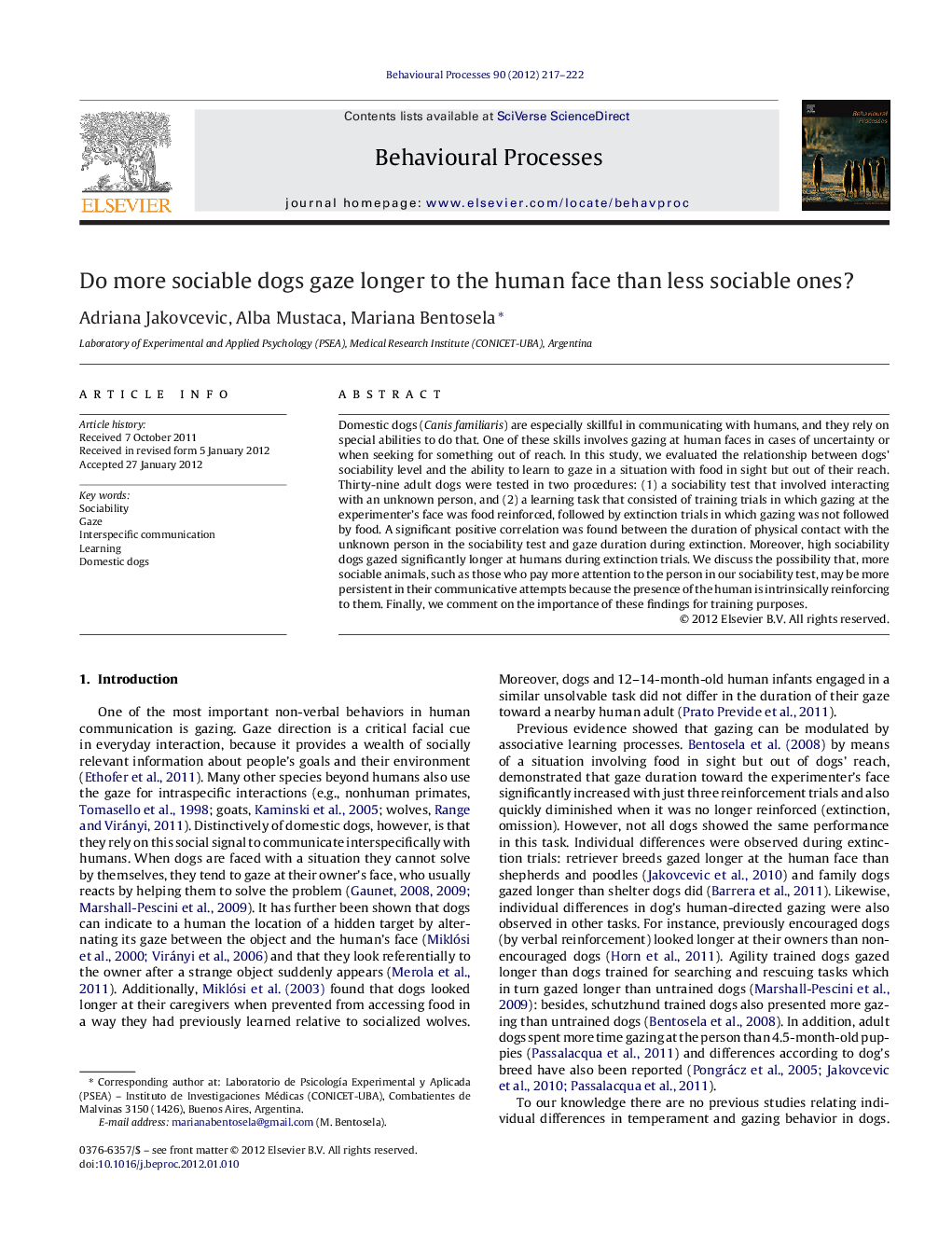| Article ID | Journal | Published Year | Pages | File Type |
|---|---|---|---|---|
| 2427029 | Behavioural Processes | 2012 | 6 Pages |
Domestic dogs (Canis familiaris) are especially skillful in communicating with humans, and they rely on special abilities to do that. One of these skills involves gazing at human faces in cases of uncertainty or when seeking for something out of reach. In this study, we evaluated the relationship between dogs’ sociability level and the ability to learn to gaze in a situation with food in sight but out of their reach. Thirty-nine adult dogs were tested in two procedures: (1) a sociability test that involved interacting with an unknown person, and (2) a learning task that consisted of training trials in which gazing at the experimenter's face was food reinforced, followed by extinction trials in which gazing was not followed by food. A significant positive correlation was found between the duration of physical contact with the unknown person in the sociability test and gaze duration during extinction. Moreover, high sociability dogs gazed significantly longer at humans during extinction trials. We discuss the possibility that, more sociable animals, such as those who pay more attention to the person in our sociability test, may be more persistent in their communicative attempts because the presence of the human is intrinsically reinforcing to them. Finally, we comment on the importance of these findings for training purposes.
► We tested dog's sociability differences in a communicative task. ► More sociable dogs gazed longer to the human face than less sociable ones. ► A new interspecific sociability test was developed and validated.
